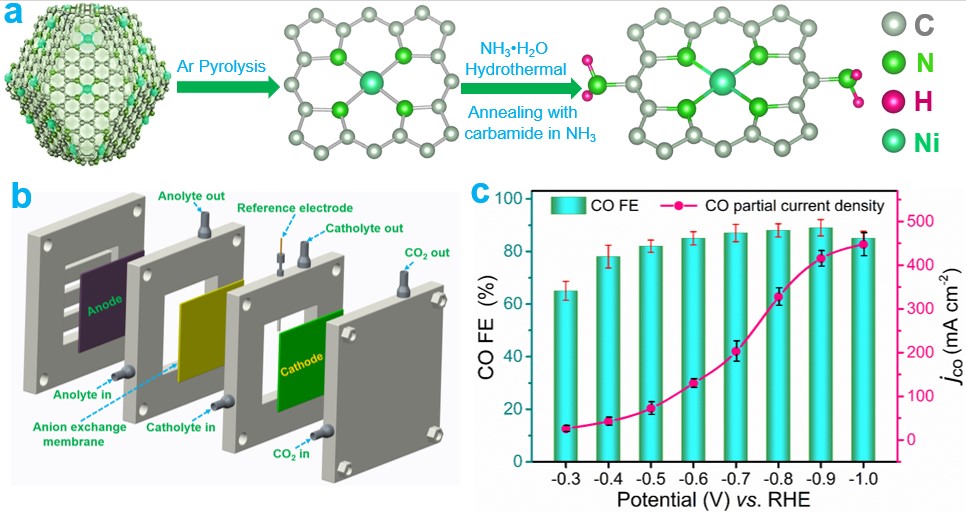
Carbon dioxide (CO2) electrocatalytic reduction driven by renewable electricity can solve the problem of excessive CO2 emissions. Since CO2 is thermodynamically stable, efficient catalysts are needed to reduce the energy consumption in the process.
The single-atom catalysts immobilized on nitrogen-doped carbon supports (M-N/C) have been widely used for CO2 electrocatalytic reduction reaction due to their high atom utilization efficiency.
Recently, a research team led by Prof. LIU Licheng from the Qingdao Institute of Bioenergy and Bioprocess Technology (QIBEBT) of the Chinese Academy of Sciences (CAS) proposed a two-step amination strategy to regulate the electronic structure of M-N/C catalysts (M=Ni, Fe, Zn) and enhance the intrinsic activity of CO2 electrocatalytic reduction.
In the strategy, the M-N4/C was aminated by annealing with carbamide in NH3, impregnation and hydrothermal reaction in ammonia water to synthesize final M-N4/C-NH2 catalysts.
Although M-N/C catalysts are widely used, they demonstrate a poor reaction current density, which is much worse than the current density of industrial level.
In the study, the researchers used gas diffusion electrodes to create a reactive three-phase interface in a flow electrolyzer to increase the current density for CO production to industrial application level.
The aminated Ni single-atom catalyst demonstrated a remarkable current density of >400 mA cm-2 with a nearly 90% Faraday efficiency for CO production, which is 1.8 times of that before amination.
The study, published in Energy & Environmental Science, provides a method for increasing current density at industrial-relevant level of single-atom catalysts.
This work was supported by the National Natural Science Foundation of China, Dalian National Laboratory for Clean Energy Cooperation Fund, Special Research Assistant Funding Project of Chinese Academy of Sciences, and China Post-doctoral Science Foundation.

The aminated single-atom catalyst with remarkable CO2 reduction activity in a gas-fed electrolytic cell. (a) Schematic of the synthesis process for Ni-N4/C-NH2, (b) Schematic of a gas-fed flow cell configuration, (c) electrocatalytic activity of Ni-N4/C-NH2 in flow cell. (Image by CHEN Zhipeng)

86-10-68597521 (day)
86-10-68597289 (night)

52 Sanlihe Rd., Xicheng District,
Beijing, China (100864)

